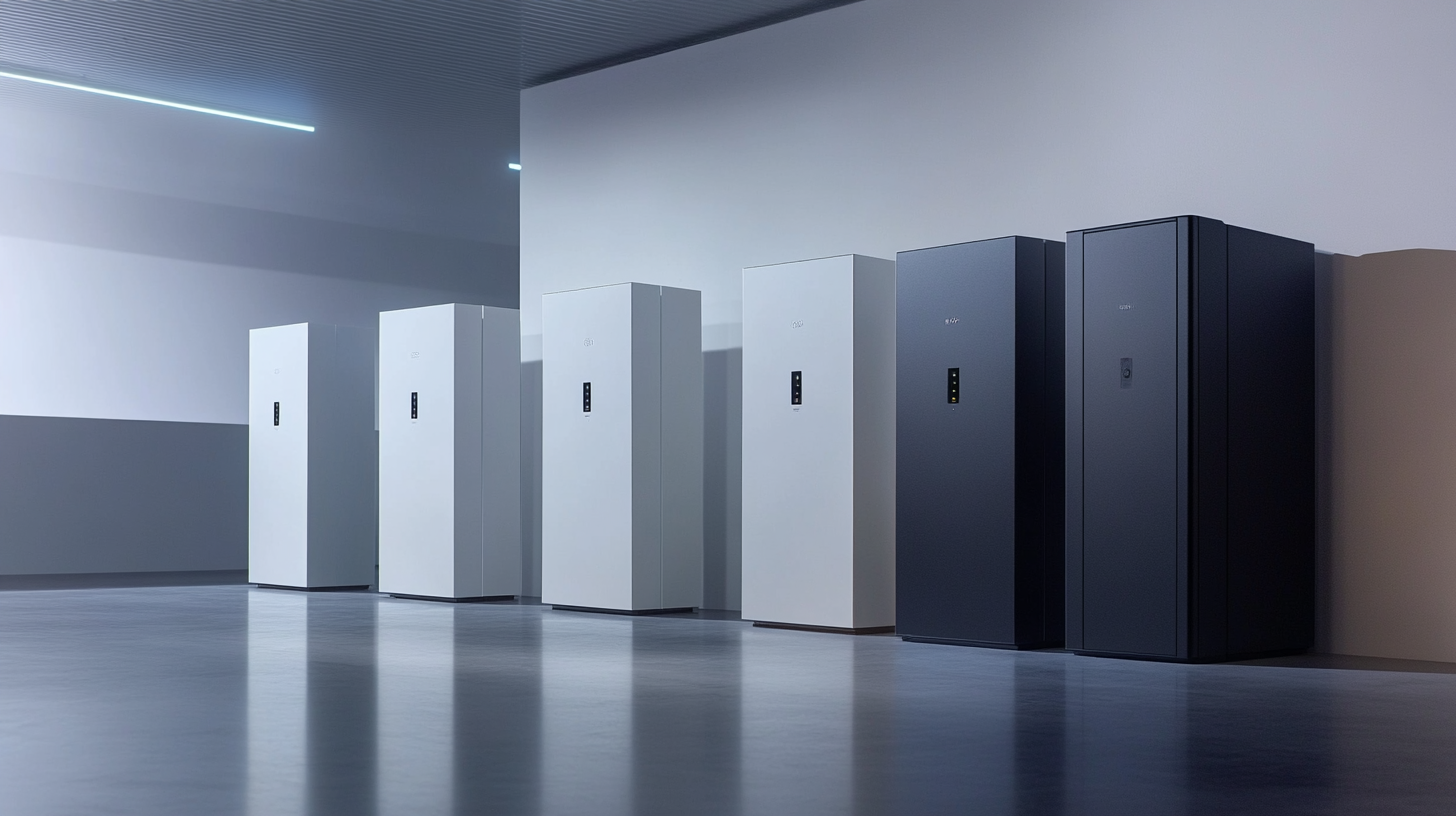As the demand for renewable energy sources continues to rise, homeowners are increasingly looking towards solar power as a viable solution for reducing their carbon footprint and energy costs. A recent report from the International Energy Agency (IEA) highlighted that global solar capacity is expected to exceed 2,400 gigawatts by 2024, reinforcing the growing trend toward sustainable energy. Central to this transition is the essential role of a solar battery for house systems, which enables users to store excess energy generated during the day for use at night or during cloudy periods. Furthermore, according to a study by BloombergNEF, the lithium-ion battery market is forecasted to grow at a compound annual growth rate of 20% through 2030, emphasizing the increasing importance of selecting the right solar battery for home installations. Choosing the optimal solar battery not only maximizes energy efficiency but also enhances the overall performance and reliability of solar power systems, making it a critical consideration for any homeowner looking to invest in clean energy solutions.

When selecting the right solar battery for your home, understanding your energy needs is crucial. Evaluating your consumption patterns not only helps in choosing a battery with the correct capacity but ensures that your energy storage solution is efficient. According to the U.S. Energy Information Administration, the average American household consumes around 877 kilowatt-hours (kWh) per month. This translates to approximately 30 kWh per day, which can guide homeowners in determining how much storage is necessary to meet their energy demands.
To get an accurate assessment of your energy consumption, consider your usage trends. The National Renewable Energy Laboratory (NREL) suggests analyzing your electricity bills over the past year to identify peak usage times, as well as any seasonal variations in consumption. For instance, families may use more power during summer months due to air conditioning or winter months for heating. By understanding these patterns, homeowners can select batteries with specific capacities, ensuring that they can store sufficient energy generated by solar panels for both everyday use and peak load times.
In addition to capacity, the discharge rate of the battery is another key factor. A report by Wood Mackenzie points out that most modern lithium-ion batteries have a depth of discharge (DoD) of around 80-90%. Effectively assessing how often your household reaches near this discharge can help optimize the battery's lifespan while ensuring that it consistently meets your energy needs. By carefully evaluating these aspects, you can make an informed choice that aligns with your energy consumption patterns.

When it comes to selecting the right solar battery for your home, understanding the various types available on the market is crucial. The most popular choices include lithium-ion and lead-acid batteries, each with unique characteristics and benefits. Lithium-ion batteries have gained a reputation for their high energy density, longer lifespan, and lower maintenance requirements. They are ideal for residential applications where space is limited and efficiency is paramount. Their ability to discharge energy more deeply without significantly degrading their performance makes them an attractive option for homeowners looking to maximize their solar investment.
In contrast, lead-acid batteries are a more traditional choice, known for their reliability and affordability. While they may have a shorter cycle life and lower energy density compared to their lithium-ion counterparts, they still serve well for those seeking a cost-effective solution for energy storage. Other alternatives, such as flow batteries and saltwater batteries, are emerging markets, each offering distinct advantages like longer lifespan or environmental friendliness. By carefully considering the specific needs of your household and weighing the pros and cons of each battery type, you can make an informed decision that not only improves your energy independence but also enhances the efficiency of your solar power system.
| Battery Type | Capacity (kWh) | Lifespan (Years) | Cycle Depth (%) | Cost ($) |
|---|---|---|---|---|
| Lithium-Ion | 10 | 10-15 | 80-90 | 5,000 |
| Lead-Acid | 8 | 3-5 | 50-60 | 2,000 |
| Saltwater | 9 | 10-15 | 70-80 | 3,500 |
| Flow | 12 | 10-25 | 100 | 8,000 |
When considering a solar battery for home energy storage, three key factors come to the forefront—capacity, lifespan, and warranty. Capacity defines how much energy the battery can store, directly influencing how much of your solar energy can be used during non-sunny periods. Choosing a battery with adequate capacity ensures your home can rely on solar energy effectively, minimizing dependency on the grid and optimizing energy savings.
Lifespan is another critical consideration. The longevity of lithium-ion batteries, commonly used in solar energy systems, is essential for sustainable practices. Batteries typically have a defined cycle life, which refers to the number of charge and discharge cycles they can undergo before their effectiveness significantly diminishes. Understanding this lifespan helps homeowners plan for potential future investments in battery replacements and ensures they maximize the benefits of their solar power systems over time.
Warranty is often an overlooked aspect, yet it provides essential protection and peace of mind. A robust warranty signals the manufacturer's confidence in their product's quality and longevity. A longer warranty period not only reflects better performance but can also reduce the financial burden on homeowners in case of unexpected issues. In summary, when choosing the right solar battery, consider capacity, lifespan, and warranty to ensure a sustainable and efficient solar energy system for your home.
When considering solar battery options for your home, compatibility with your existing solar setup is paramount. Many homeowners may overlook the critical need for integration, which can lead to performance issues or inadequate energy storage. To ensure a seamless connection, it's essential to verify that the battery you select is compatible with your current solar inverter system. New advancements in technology, such as the latest software updates for solar inverters, are designed to facilitate such integrations, minimizing any barriers to upgrading your energy storage capabilities.
Additionally, the growing trend of combining solar power with storage solutions highlights the importance of supporting grid compatibility. As more regions look to transition towards carbon-neutral energy systems, solar batteries need to align not only with household setups but also with the broader electrical grid. By focusing on batteries that enhance this integration, homeowners can contribute to a more sustainable energy future while ensuring their systems are efficient and equipped for the demands of modern energy usage.
When considering solar batteries for your home, it's crucial to account for multiple financial aspects to ensure you make a well-informed purchase. The initial cost of solar batteries can be significant, often dependent on the brand, capacity, and technology used. Homeowners should budget not only for the batteries themselves but also for installation and any necessary upgrades to their home’s electrical system. As solar energy becomes more popular, prices may fluctuate, so researching and comparing different options can lead to potential savings.
Beyond the purchase, ongoing maintenance costs can also impact your budget. Regular check-ups and occasional replacements might be necessary to keep your solar battery functioning optimally. It's essential to consider these long-term expenses when evaluating the overall value of a solar battery system. Additionally, with increasing discussions around backup power sources due to seasonal storms, investing in reliable solar energy solutions can provide peace of mind. Taking advantage of tax credits and local incentives can further ease the financial burden, making solar power a more accessible option for homeowners looking for sustainable energy alternatives.
